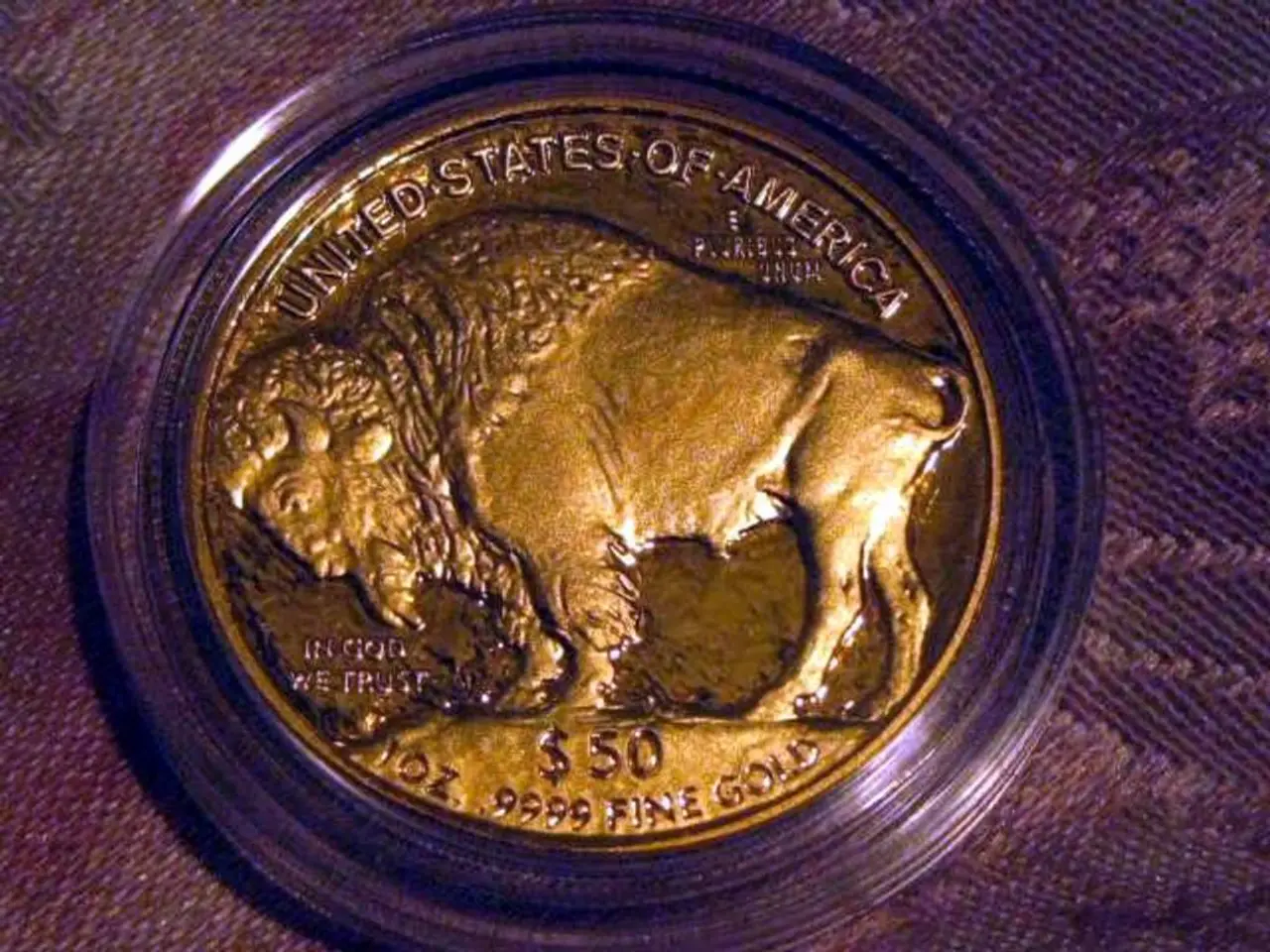Persistent Decline in US Dollar Strength, According to the IMF
=====================================================================
In a surprising turn of events, the currencies of developing countries have strengthened since April, while the U.S. dollar has shown a consistent trend of devaluation. This shift has raised questions about the dollar's future as a safe-haven currency.
The International Monetary Fund (IMF) has expressed uncertainty about the long-term expectations of further dollar depreciation, but one thing is clear: the dollar's depreciation is primarily due to a combination of rising fiscal debt, erratic trade policies, declining investor confidence, and shifting global capital flows.
Tariff Impact on Trade and Dollar Demand
The aggressive tariffs imposed by the U.S. government disrupted trade patterns, causing companies to front-load imports in Q1 2025. This led to a large temporary increase in the supply of dollars in foreign exchange markets as firms exchanged dollars for foreign currencies to pay for imports. Once inventories built ahead of tariffs normalize, the reduced natural demand for dollars creates a persistent downward pressure on the currency.
Fiscal Deficits and Policy Uncertainty
The rising U.S. fiscal deficit and growing policy uncertainty introduced a fiscal risk premium on the dollar. Markets reacted negatively following tariff announcements despite rising U.S. yields, indicating that concerns about U.S. economic management and openness to foreign investment now weigh more heavily than yield advantages. This lowers the hegemonic premium that U.S. assets and the dollar traditionally enjoyed.
Narrowing Interest Rate Differentials
The shrinking interest rate advantage of the U.S. dollar compared to other major economies lowers the incentive for investors to hold dollar-denominated assets, contributing to sustained dollar weakness.
Long-Term Structural Shifts and Investor Expectations
There is an ongoing de-dollarization trend and a shift in long-term investor positioning, reflecting doubts about the dollar’s role as the global reserve currency. Bank of America and J.P. Morgan both highlight that structural market positioning and shifting global economic recoveries are driving sustained bearish outlooks on the dollar.
Capital Flow Trends
The combination of tariff-induced trade disruptions, fiscal concerns, and global geopolitical tensions have triggered capital outflows from U.S. assets. Investors diversify into emerging markets, commodities, and other currencies that offer better real rates and stability prospects, further weakening the dollar’s demand.
In conclusion, despite tariffs and deficits traditionally being dollar-supportive by restricting imports and increasing government bond issuance, the unpredictability of U.S. economic policies, the adverse market reaction to these policies, and the evolving global economic landscape are overriding these effects, leading to dollar depreciation. Long-term investor expectations and capital flows reflect growing skepticism about U.S. policy and the dollar’s safe-haven status.
The phenomenon was reported by Axios, with analysts attributing the currency's course to a decrease in interest in American assets. However, it is important to note that the IMF does not confirm a significant confirmed capital outflow from the U.S., according to current data on cross-border flows. The dollar's depreciation trend continues to be displayed consistently.
[1] Axios (2025). The dollar is depreciating despite increased tariffs and a growing budget deficit. [Online]. Available: https://www.axios.com/dollar-depreciation-tariffs-deficit-56f7a25e-e25d-4e5b-896c-565656565656.html
[2] Bank of America (2025). Bearish outlook on the dollar driven by structural market positioning and shifting global economic recoveries. [Online]. Available: https://www.bankofamerica.com/research-and-insights/economics/bearish-outlook-on-the-dollar-driven-by-structural-market-positioning-and-shifting-global-economic-recoveries.html
[3] J.P. Morgan (2025). Doubts about the dollar’s role as the global reserve currency fuel bearish outlooks on the dollar. [Online]. Available: https://www.jpmorgan.com/research/doubts-about-the-dollars-role-as-the-global-reserve-currency-fuel-bearish-outlooks-on-the-dollar
[4] International Monetary Fund (2025). IMF expresses uncertainty about long-term expectations of further dollar depreciation. [Online]. Available: https://www.imf.org/en/News/Articles/2025/04/20/IMF-expresses-uncertainty-about-long-term-expectations-of-further-dollar-depreciation
[5] Federal Reserve (2025). American government bonds and the dollar have started to lose their "safe haven" status. [Online]. Available: https://www.federalreserve.gov/newsevents/pressreleases/monetary20250401a.htm
The news of the dollar's depreciation has been reported by Axios, with analysts suggesting that a decrease in interest in American assets may be the reason. This trend is in alignment with J.P. Morgan's observation about doubts concerning the dollar's role as the global reserve currency, which is also fueling bearish outlooks on the dollar.
In the financial realm, the IMF has expressed uncertainties about the long-term impacts of further dollar depreciation, noting that rising fiscal debt, erratic trade policies, declining investor confidence, and shifting global capital flows largely contribute to the dollar's depreciation. Meanwhile, the narrowing interest rate differentials between the U.S. and other major economies lessen the incentive for investors to hold dollar-denominated assets, leading to sustained dollar weakness.







